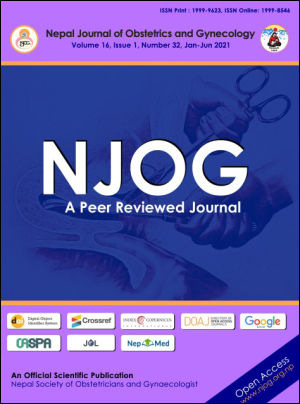Clinical profile of Female Urinary Incontinence: A Hospital Based Study
Keywords:
incontinence, mixed, stress, urge, urinaryAbstract
Aim: To determine the prevalence of urinary incontinence of women attending gynae outdoor patient department.
Method: It is a prospective cross sectional study conducted at Paropakar Maternity and Women’s Hospital for three months. Types of incontinence, their presentation, associated factors, age and parity were the variables studied. Data were analyzed by descriptive statistics.
Results: Out of 950 gynaecological out-patients, 97 had urinary incontinence(10.2%); 34.1% were in 50- 59 years and 37.2% were multipara. Stressurinary incontinence (SUI) was the most common incontinence (56.7%) followed by mixed urinary incontinence (22.7%) and urge urinary incontinence (20.6%). Common complaints were leakage during coughing (63.6%) and sneezing(18.2%) in SUI;urgency and frequency were main problem in mixed and urge urinary incontinence. Three-fourth cases had associated medical conditions and rest had gynecological factors.
Conclusions: Urinary incontinence is common in the fifth decade of life of women and more than half had stress incontinence.
Downloads
Downloads
Published
How to Cite
Issue
Section
License

This work is licensed under a Creative Commons Attribution-NonCommercial 4.0 International License.
Copyright on any research article in the Nepal Journal of Obstetrics and Gynaecology is retained by the author(s).
The authors grant the Nepal Journal of Obstetrics and Gynaecology a license to publish the article and identify itself as the original publisher.
Articles in the Nepal Journal of Obstetrics and Gynaecology are Open Access articles published under the Creative Commons CC BY-NC License (https://creativecommons.org/licenses/by-nc/4.0/)
This license permits use, distribution and reproduction in any medium, provided the original work is properly cited, and it is not used for commercial purposes.



